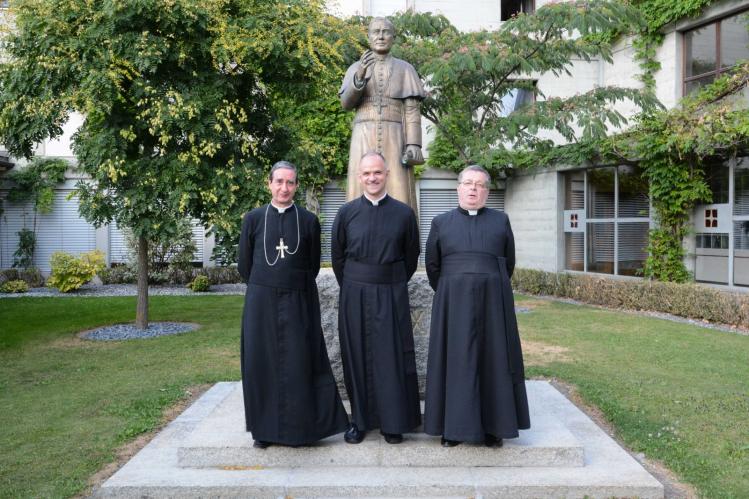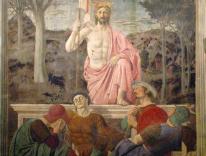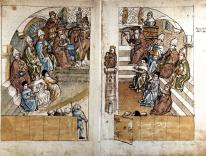
One of the most critical moments in the pontificate of Benedict XVI came on January 24, 2009, when a press release from the Holy See Press Office announced that the pope had lifted the excommunication against four bishops of the Society of St. Pius X. The SSPX bishops had all been consecrated by Marcel Lefebvre in 1988 without Rome’s permission. Almost immediately after Benedict’s decision was announced, it was revealed that one of these four bishops, Richard Williamson, had made anti-Semitic statements. (In 2010 Williamson was fined by a German court for denying the Holocaust, and on January 31, 2019, the European Court of Human Rights in Strasbourg upheld the sentence, rejecting Williamson’s rights case against the German court’s decision as “manifestly ill-founded.”) Benedict’s overture to the SSPX was—along with Summorum pontificum, his 2007 motu proprio on the liturgy—part of an effort at reconciliation with Catholic traditionalists who had broken with the church after the Second Vatican Council.
Francis has had to deal with the consequences of Benedict’s rapprochement with traditionalists since the beginning of his pontificate. Recently there was an important turning point. On January 19, during the week of prayer for Christian unity (January 18–25), the Vatican announced that Francis had decided to abolish Ecclesia Dei, the pontifical commission created by John Paul II in 1988, and to reassign its work to a section within the Congregation for the Doctrine of the Faith. This is one of the most important changes Francis has made to the structure of the Roman Curia since becoming pope.
On the same day the change was announced, the Vatican’s new media team put out an official explainer. Its author, Andrea Tornielli, pointed out that much had changed since Ecclesia Dei was instituted in 1988. Benedict’s 2007 motu proprio on the liturgy, which relaxed restrictions on the use of the Tridentine rite, had altered the relations between Rome and the SSPX. The abolition of Ecclesia Dei, Tornielli explained, should be understood as the recognition of a new period of stability in these relations: the emergency of the late 1980s is over, and now the only issues that still separate traditionalists from the church are doctrinal rather than liturgical—which is why they should be handled by the Congregation for the Doctrine of the Faith.
Ecclesia Dei had already been downsized in 2017, when theological dialogue between the Vatican and the SSPX had been put under the control of the CDF. Still, getting rid of Ecclesia Dei altogether is important as a sign that the influence of traditionalists within the curia, which had been waxing during the previous pontificate, is now waning.
Despite criticizing those obsessed with liturgy, Francis has made no change in the availability of the pre–Vatican II Roman rite. Instead, he has restructured the church’s relations with traditionalists: first during the preparation of the Extraordinary Jubilee of Mercy, when he recognized the faculties of SSPX priests to hear confessions (later extended beyond the Jubilee), then in 2017 when he recognized their faculties for the celebration of SSPX marriages. But a canonical normalization of the status of the SSPX as a “personal prelature” within the Catholic Church—an idea first floated in traditionalist circles in 2012—remains very unlikely. One reason for this is the election in July 2018 of a new SSPX superior, the forty-seven-year-old Italian hardliner Davide Pagliarani.
That doesn’t mean there’s more distance between Rome and traditionalist circles in general. Francis’s insistence on mercy entails a willingness to reach out to anyone, including traditionalist Catholics. His January 19 motu proprio abolishing Ecclesia Dei notes that “the institutes and the religious communities that usually celebrate in extraordinary form, have today found their own stability of number and life.” The pope is referring here not only to the SSPX but also to traditionalist groups still in communion with Rome.
The new motu proprio shows us how Francis sees Catholic traditionalism. He believes that since 2007 Rome has done everything possible to normalize relations with the SSPX, but he also refuses to yield on the development of the tradition. Interestingly, this is how the traditionalists themselves, including the SSPX, have interpreted Francis’s message. Above all, Francis will not accept the SSPX’s rejection of Vatican II as a legitimate council of the Catholic Church. And what he won’t accept in the SSPX he also won’t accept in traditionalists in communion with Rome. The new motu proprio signals that the traditionalists can continue to have the preconciliar liturgy, but they cannot keep the preconciliar theology that usually goes with their liturgical taste. This is Francis’s pragmatic way of finessing the ancient principle of lex orandi, lex credendi (“the law of praying is the law of believing”). A strict doctrinal application of that principle would seem to require an abrogation of Summorum pontificum, but this is pastorally impossible. After all, the author of that earlier motu proprio, Benedict XVI, is now pope emeritus and is still living in the Vatican. And while the traditionalist movement has become more fragmented in the past decade, it has also become one of the faces of the intra-Catholic resistance against Francis’s pontificate.
Coincidentally (or maybe not), Francis’s motu proprio was published during the “week of prayer for Christian unity.” One could argue that the ecumenism we need most right now is intra-Catholic ecumenism. The Lefebvrites are now considered more fully part of the Catholic Church than they were under John Paul II and Benedict XVI: a peculiar form of ecumenism has developed for and among those traditionalist Catholics who do not believe in ecumenism. Roman Catholicism today is a world of shifting boundaries; old categories are being redefined. In recent years, it has not always been clear where exactly Catholic traditionalism stops being just a sensibility or a liturgical preference and becomes a schismatic tendency leading toward the position of the SSPX. That boundary had been blurred by the return to Rome of many former Lefebvrite communities. But it had also become blurred among Vatican officials in charge of doctrinal policies, as Ecclesia Dei showed. Francis wants to be generous, but he also wants to be unambiguous. His motu proprio getting rid of Ecclesia Dei is one of the clearest statements of the church’s trajectory under this pontificate: pastoral pragmatism, a firm commitment to conciliar doctrinal development, and a rejection of the traditionalist revaluation of Vatican II. This pope knows that traditionalism is not going away any time soon, and he is even willing to accommodate it where he can, but he will not give an inch on Vatican II and its binding value for the Catholic Church.
Please email comments to [email protected] and join the conversation on our Facebook page.
Previous Story
Taming the Demon
Next Story
Carnage of His Own Making

